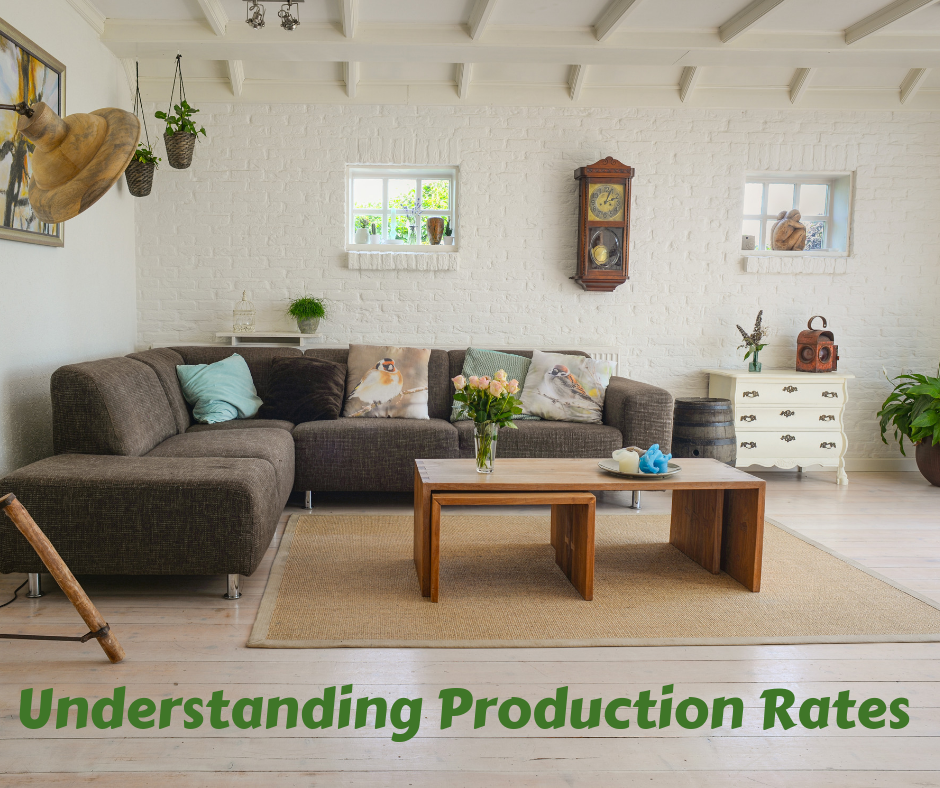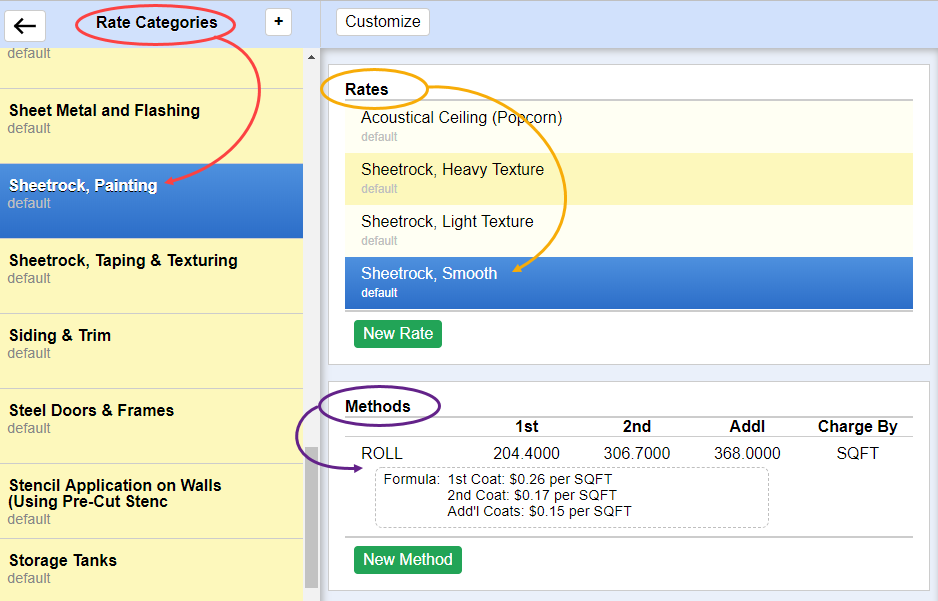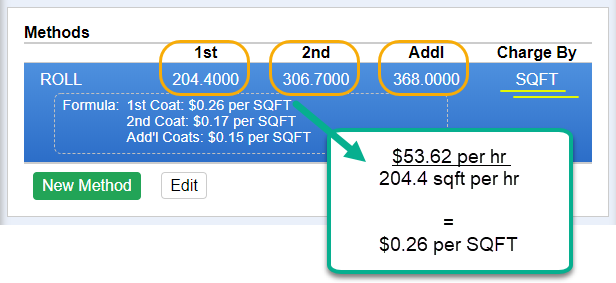We’re going to build auto-calculating estimating forms, and to do that we need to understand where the information comes from. So we’re here to discuss Production Rates. Production Rates are used to figure out how long a task will take.
PEP’s Production Rate library contains hundreds of rates. Each one can be modified. New rates can also be added to the library.
What is a Production Rate?
A Production Rate is a record of efficiency – TIME, not money. The Production Rates record how much work can be done in 1 hour. When you’re estimating in PEP, you select the Production Rate, indicate the size of the task, and the program calculates how long it will take. That time is multiplied by your hourly labor rate (including overhead and profit markup) to come up with the price of that task.
PEP offers an entire library of Production Rates for you to use in your estimating. You can think of the Production Rate library similarly to a physical library: You have shelves that hold all of the books, and books that contain chapters, and chapters that tell all of the information.
Note: You can explore the Production Rate Library by clicking SETTINGS >> PRODUCTION RATES.
How to Navigate PEP’s Production Rate Library:
- Select the RATE CATEGORY, this is the general task you are working on and the “shelves of a library” (i.e. Sheetrock, Painting).
- Select the RATE, this is the type of material you’ll be working with- smooth vs. textured- and the “book on a shelf” (i.e. Sheetrock, Smooth).
- Select the METHOD, how you will be applying the paint- roll vs. spray vs. brush. These are the “chapters of a book” and determine what the Production Rate will be (i.e. Roll).
What does this mean?
Every Production Rate Method shows how much work can be done in 1 hour.
“1st, 2nd, Addl” refer to the number of coats or steps to complete a task. In this case, we’re looking at a Production Rate for painting smooth sheetrock with a roller.
- A painter rolling the first coat on a smooth sheetrock surface should be able to cover 204.4 sq/ft per hour.
- The second coat goes faster so the painter should be able to cover 306.7 sq/ft per hour.
- Additional coats go even faster and the painter should be able to cover 368 sq/ft per hour.
What’s the Formula showing?
The formula shows what you’ll end up charging per sq/ft on this task based on your hourly Labor Rate. The sample labor rate is set to $53.62/hr – your’s is probably different. Your hourly labor rate should be calibrated to reflect your business’s expenses and profit goals. Click here for more info about figuring out your labor rate.
How is this information used in an estimate?
Two things happen when you use a Production Rate: (1) you get an estimate of the time the task will take AND (2) PEP calculates the price of the work based on your hourly labor rate. PEP uses the dimensions you entered to determine how many hours it will take to paint the walls and multiplies it by your hourly Labor Rate.
Do Production Rates Include Prep Work?
Production Rates only refer to actual painting and do not include preparation (moving furniture, removing switch plates, patching holes, etc), however, there are Production Rates available for surface prep (sanding, scraping, window glazing, etc). You can also account for prep work by adding an hourly task line to your estimate, labeled “prep,” so you can accurately assess the condition of the room and the amount of time it will take to prepare the area.
Typical Production Rate METHODS:
- Brush – This means brushing everything.
- Roll – This means “brush and roll.” Cutting-in edges with a brush and rolling the surface accounts for the slower speed on the first coat of paint.
- Spray – This means “spray and back roll” or going over the sprayed paint with a roller.
- Other
Tip: If making your own Production Rates, be consistent with your METHOD. PEP uses the Production Rate METHOD information in other places of the program so it is important to be consistent.
Note: You cannot change the names of the pre-loaded RATES but you can modify the METHOD or add a new METHOD. METHODS can be customized without having to create new Production Rates. But if you want to add a Production Rate, choose the CATEGORY that makes sense then click NEW RATE.
Up next:
In the next blog we’re going to use Production Rates to build an auto-calculating form. You can get ready now!
- Focus on a single area that you regularly work on; a basic interior room for example. Make a list of all the tasks you regularly do there (what goes into Prep, what gets painted, etc).
- Explore the Production Rate Library and identify which Production Rates you want to use on those tasks (Hint: You can use the same rate for multiple tasks).
Note: Exterior work gets more complicated with different options. - Follow the same steps for an exterior estimate (i.e. siding, fascia, soffits, windows, doors, etc).
Note: We’ll use that list to build a form next time.




Recent Comments